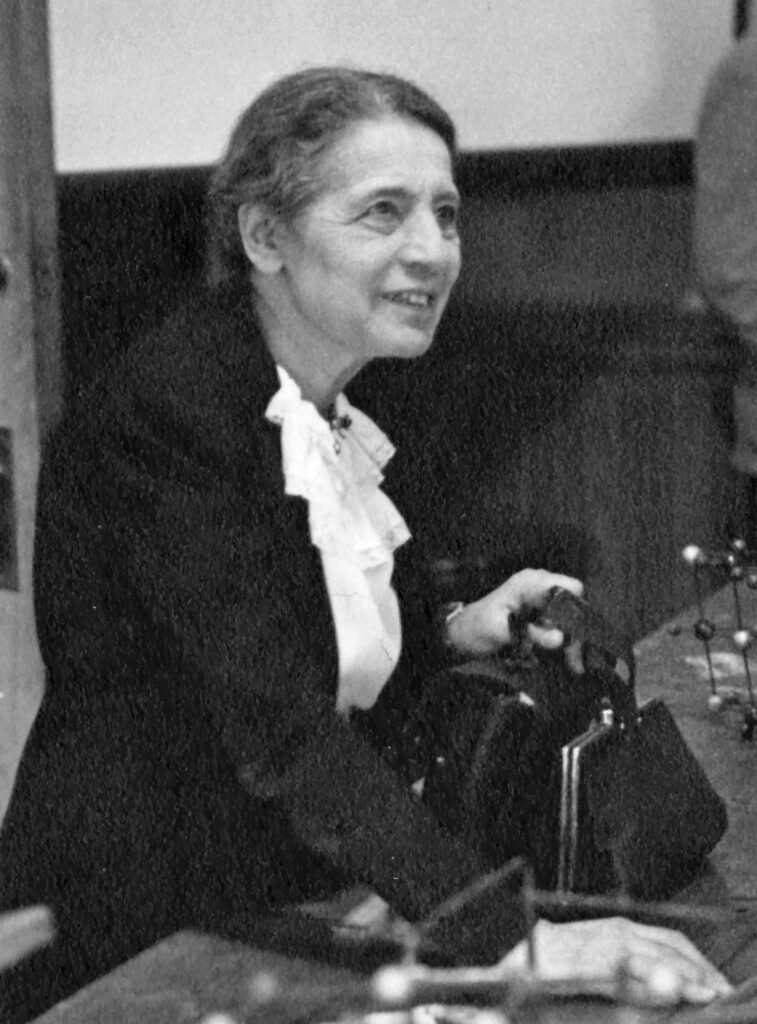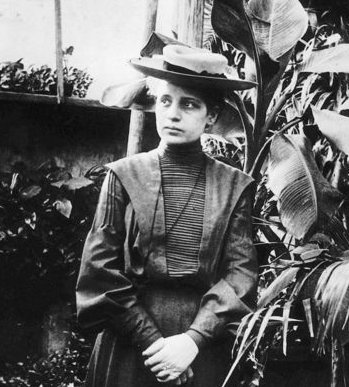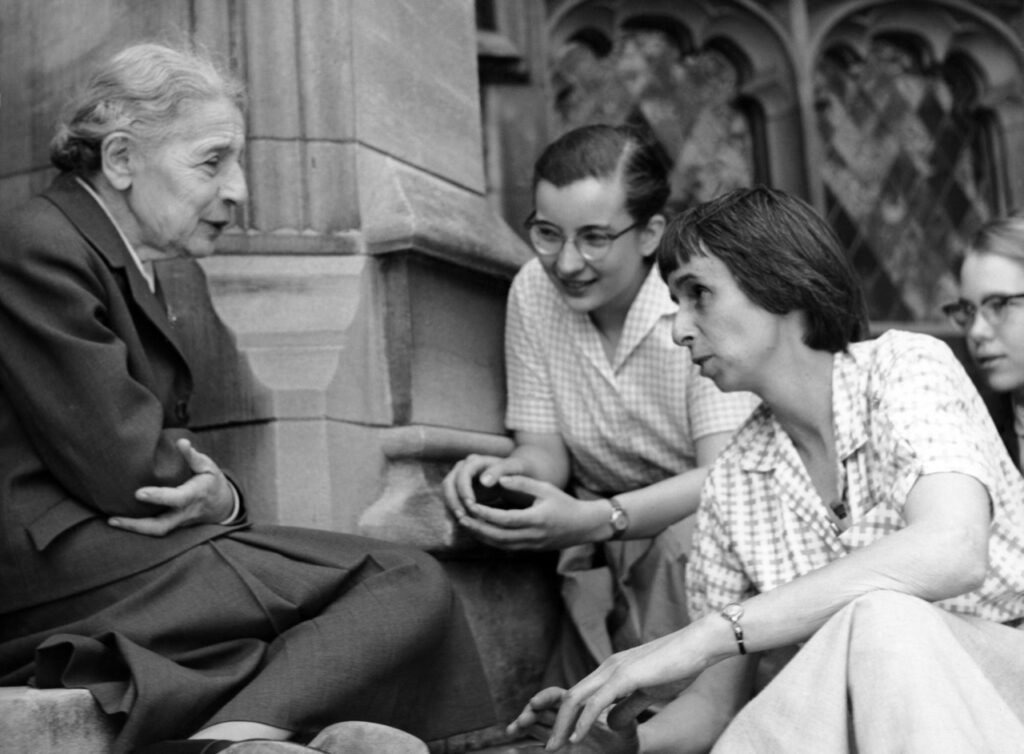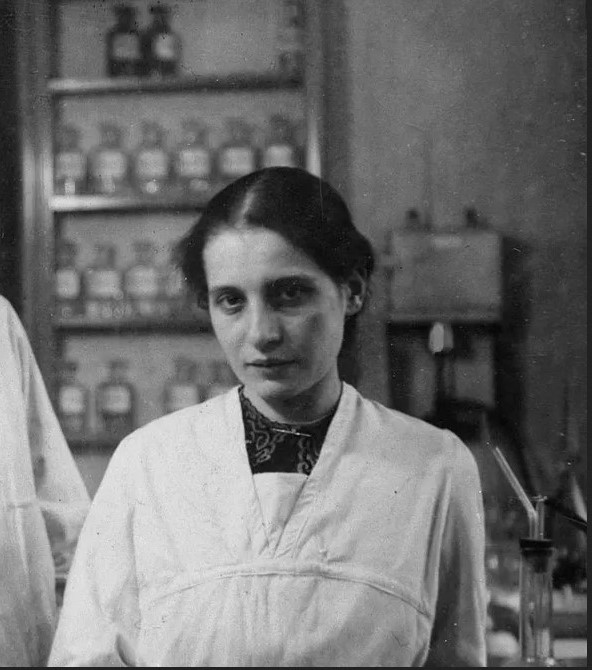Lise Meitner's Life
Lise Meitner was a pioneering physicist whose contributions to science, particularly in the field of nuclear physics, have left an indelible mark on history.
Life and Work
Born on November 7, 1878, in Vienna, Austria-Hungary, she was the third of eight children in a Jewish family. Despite societal restrictions on women’s education at the time, Meitner pursued her passion for science, earning her doctorate in physics from the University of Vienna in 1906, becoming only the second woman to achieve this milestone there.
Her career took her to Berlin, where she worked alongside Otto Hahn at the Kaiser Wilhelm Institute for Chemistry. Together, they made significant discoveries, including the isolation of the isotope protactinium-231. Meitner also discovered the Auger effect in 1922, though it was later named after another scientist.

In 1938, as Nazi Germany’s anti-Semitic policies escalated, Meitner, who had converted to Protestantism but was still considered Jewish, fled to Sweden. There, she collaborated with her nephew, Otto Frisch, to interpret Hahn and Fritz Strassmann’s experimental data on uranium. This work led to the groundbreaking discovery of nuclear fission, a term Meitner herself coined.
Despite her pivotal role, Meitner was overlooked when Hahn received the Nobel Prize in Chemistry in 1944 for the discovery of nuclear fission. However, her legacy endures, with the element meitnerium (Mt) named in her honor. She spent her later years in England, where she passed away on October 27, 1968, at the age of 89.

Lise Meitner's Scientific Contributions
Lise Meitner’s scientific contributions were vast and transformative, particularly in the realm of nuclear physics.
Nuclear Fission
Meitner’s most renowned contribution was her role in explaining nuclear fission. After Otto Hahn and Fritz Strassmann’s experiments showed that uranium could split into lighter elements like barium when bombarded with neutrons, Meitner, along with her nephew Otto Frisch, provided the theoretical explanation for this phenomenon. They described how the nucleus of uranium could split into two smaller nuclei, releasing a tremendous amount of energy. Meitner coined the term “fission” to describe this process, drawing an analogy to biological cell division.
Discovery of Protactinium-231
In 1917, Meitner and Otto Hahn successfully isolated the isotope protactinium-231. This was a significant achievement in the study of radioactive elements, as protactinium is a rare and highly radioactive element. Their work helped fill a gap in the periodic table and advanced the understanding of radioactive decay chains.

Auger Effect
Meitner discovered the radiationless transition now known as the Auger effect in 1923. This phenomenon involves the emission of electrons from an atom without accompanying radiation. Unfortunately, the effect was later named after Pierre Auger, who independently discovered it two years later.
Nuclear Isomerism and Beta Decay
Meitner conducted pioneering research on nuclear isomerism, which involves nuclei existing in different energy states, and beta decay, a type of radioactive decay where a beta particle (electron or positron) is emitted.

Lise Meitner's Accomplishments
First Female Physics Professor in Germany
In 1926, Meitner became the first woman to hold a professorship in physics in Germany, breaking significant gender barriers in academia. This role, at the University of Berlin, allowed her to mentor and inspire future generations of scientists.
Advocacy for Peaceful Science
Meitner took a strong ethical stance against the use of nuclear fission for destructive purposes. She declined an invitation to work on the Manhattan Project and co-signed a 1955 letter to the United Nations calling for a ban on nuclear weapons, emphasising her commitment to the peaceful application of scientific discoveries.

Legacy
Lise Meitner’s legacy is one of scientific brilliance, resilience, and ethical integrity. Despite being overlooked for the Nobel Prize, Meitner received numerous honors, including the Enrico Fermi Award. She is remembered as a trailblazer in nuclear physics and a role model for women in science. Meitner’s story of perseverance in the face of adversity and her scientific contributions continue to inspire scientists and advocates for equality.
Explore Further
Continue learning about the lives of the people that shaped nuclear history.
Did you know? Explore Nuclear also offers great careers information and learning resources.
Below you can find references to the information and images used on this page.
Content References
- Lise Meitner | Biography & Facts | Britannica
- Lise Meitner – Wikipedia
- Lise Meitner – Nuclear Museum
- Lise Meitner: Life, Findings and Legacy | Live Science
- Lise Meitner – the forgotten woman of nuclear physics who deserved a Nobel Prize
- Women in Radiation History: Lise Meitner | US EPA
- Lise Meitner – Biography, Facts and Pictures
- Lise Meitner | Biographies
Image References
- Hahn and Meitner in 1912 – Unknown author – Public Domain
- Lise Meitner – Unknown author – Public Domain
- Lise Meitner (1878-1968), lecturing at Catholic University – Smithsonian Institution – No known copyright restrictions
- Lise Meitner arrives in Vienna to attend the opening of the “Atoms at Work” exhibition – IAEA – CC BY-SA 2.0
- Chemist Lise Meitner with students – Bryn Mawr College – CC BY-SA 2.0

